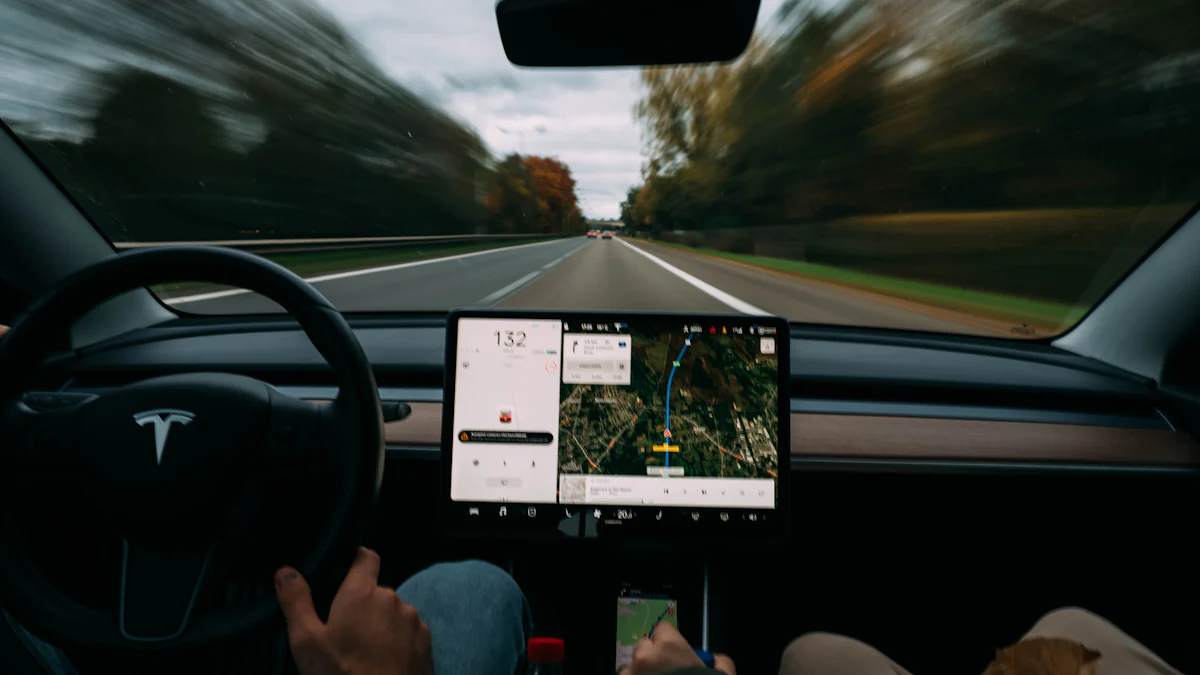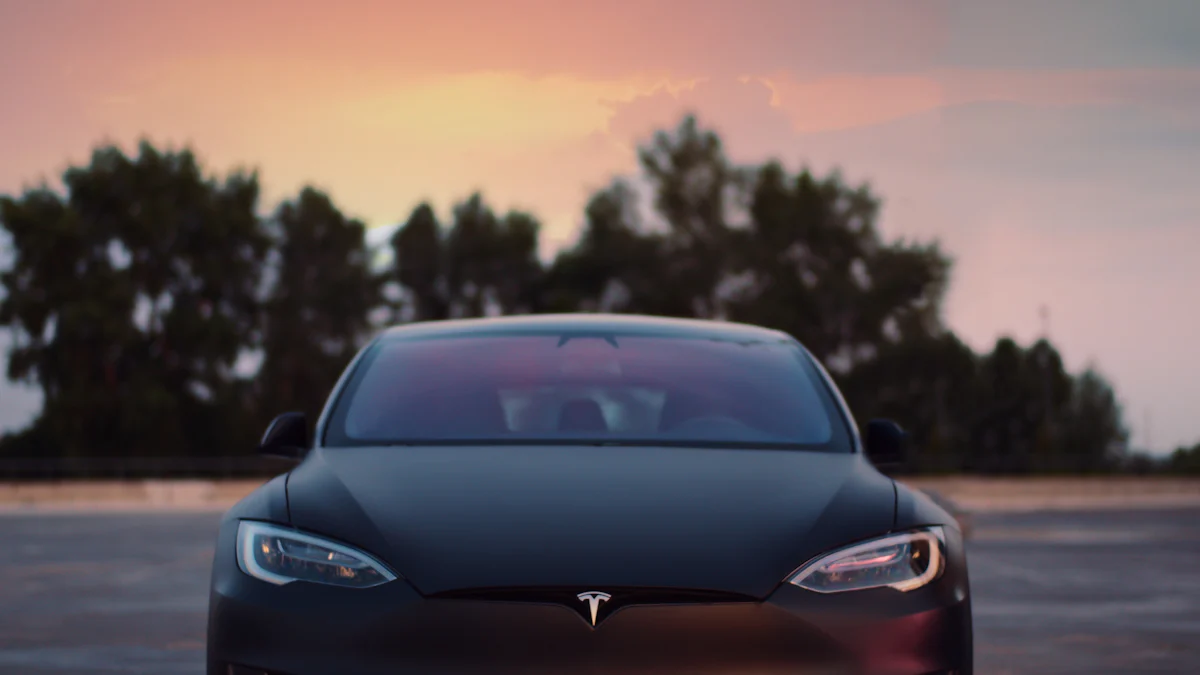Tesla's Strategy for Advancing Autopilot Capabilities

Tesla's Autopilot technology represents a significant leap in the automotive industry. Autonomous driving holds immense importance for enhancing road safety and efficiency. Tesla's commitment to innovation drives continuous advancements in this field. The company employs a robust Tesla Autopilot strategy that combines artificial intelligence, sensors, and data processing systems. This approach has positioned Tesla at the forefront of technological progress. Elon Musk emphasized the importance of data collection and continuous learning for improving Tesla's Autopilot capabilities. The Tesla Autopilot strategy involves using the customer fleet for data collection and testing, allowing for rapid improvements.
Tesla Autopilot Strategy: Technological Foundations

Hardware Components
Sensors and Cameras
Tesla's Autopilot system relies heavily on an array of sensors and cameras. Eight cameras provide 360-degree visibility around the vehicle. These cameras capture high-definition images, which the system uses to understand the environment. Ultrasonic sensors complement the cameras by detecting nearby objects. This combination ensures comprehensive environmental awareness.
Computing Power and AI Chips
Tesla has developed its own AI chips to handle the immense computational demands of Autopilot. The Hardware 3.0 chip, introduced in 2019, processes data from the sensors and cameras in real-time. This chip can perform up to 144 trillion operations per second. This level of computing power enables the vehicle to make quick and accurate decisions.
Software Algorithms
Machine Learning and Neural Networks
Machine learning plays a crucial role in Tesla's Autopilot strategy. The system uses neural networks to interpret data from the vehicle's sensors. Tesla trains these networks using data collected from millions of miles driven by Tesla vehicles. This approach, known as imitative learning, helps the system learn from human drivers. The neural networks continuously improve, making the system smarter over time.
Real-time Data Processing
Real-time data processing is essential for the Autopilot system. The vehicle must analyze data from its sensors and cameras instantly. This capability allows the system to react to changing road conditions. Tesla's AI algorithms process this data to make split-second decisions. This ensures that the vehicle can navigate safely and efficiently.
Tesla Autopilot Strategy: Strategic Partnerships and Collaborations
Key Partnerships
Collaborations with AI and Tech Companies
Tesla's collaboration with Mobileye marked a significant milestone. The partnership allowed Tesla to offer customers the opportunity to pre-purchase the Autopilot feature. This collaboration validated the feasibility of self-driving cars. Mobileye provided crucial technology that helped Tesla develop its initial Autopilot system.
Tesla also collaborates with other AI and tech companies to enhance its Autopilot capabilities. These partnerships enable Tesla to integrate cutting-edge technologies into its vehicles. By leveraging external expertise, Tesla accelerates the development of its autonomous driving features.
Supplier Relationships for Hardware Components
Tesla maintains strategic relationships with suppliers for hardware components. These suppliers provide essential parts such as sensors and cameras. High-quality hardware is crucial for the effectiveness of the Autopilot system. Tesla's supplier relationships ensure a steady supply of these components.
Tesla's in-house development of AI chips complements these supplier relationships. The combination of external and internal resources strengthens Tesla's Autopilot strategy. This approach allows Tesla to maintain control over key aspects of its technology while benefiting from external innovations.
Impact of Partnerships
Accelerating Development
Strategic partnerships play a vital role in accelerating the development of Tesla's Autopilot. Collaborations with AI and tech companies bring advanced technologies into Tesla's ecosystem. These partnerships enable rapid prototyping and testing of new features. The integration of external expertise speeds up the innovation process.
Supplier relationships also contribute to faster development. Reliable access to high-quality hardware components ensures that Tesla can implement new technologies quickly. The combination of these factors allows Tesla to stay ahead in the competitive autonomous driving market.
Enhancing Capabilities
Partnerships significantly enhance the capabilities of Tesla's Autopilot system. Collaborations with AI and tech companies provide access to state-of-the-art algorithms and software. These advancements improve the accuracy and reliability of the Autopilot system. Enhanced capabilities translate to better performance and safety for Tesla vehicles.
Supplier relationships also play a crucial role in enhancing Autopilot capabilities. High-quality sensors and cameras are essential for accurate environmental perception. Reliable hardware ensures that the Autopilot system can function effectively in various conditions. The synergy between hardware and software advancements strengthens Tesla's Autopilot strategy.
Regulatory and Safety Considerations
Navigating Regulatory Landscapes
Compliance with Local and International Laws
Tesla's Autopilot strategy must comply with various local and international laws. Each country has specific regulations for autonomous driving systems. Tesla ensures that its Autopilot technology meets these standards. Compliance with safety standards supports the efficacy of Tesla's autonomous systems.
The National Highway Traffic Safety Administration (NHTSA) investigates Tesla's Autopilot system. This investigation follows multiple incidents involving crashes. The scrutiny highlights the importance of regulatory compliance. Tesla's commitment to adhering to safety standards helps mitigate these concerns.
Advocacy and Lobbying Efforts
Tesla engages in advocacy and lobbying efforts to influence autonomous driving regulations. These efforts aim to shape favorable policies for the adoption of self-driving technology. Tesla works closely with regulatory bodies to address safety concerns and improve legislation.
The National Transportation Safety Board (NTSB) criticized Tesla's lack of system safeguards in an Autopilot crash. The NHTSA ordered automakers to report crashes involving Advanced Driver Assistance Systems (ADAS). Tesla's proactive engagement with regulators helps navigate these challenges. Advocacy efforts focus on promoting the benefits of autonomous driving while ensuring safety.
Safety Measures and Testing
In-house Testing Protocols
Tesla employs rigorous in-house testing protocols for its Autopilot system. These protocols ensure the safety and reliability of the technology. Tesla's engineers conduct extensive simulations and real-world tests. The goal is to identify and address potential issues before public deployment.
Tesla's Autopilot strategy includes continuous improvement through testing. Engineers analyze data from test vehicles to refine the system. This iterative process enhances the performance and safety of Autopilot. In-house testing remains a cornerstone of Tesla's approach to autonomous driving.
Real-world Testing and Data Collection
Real-world testing plays a crucial role in Tesla's Autopilot strategy. Tesla uses its customer fleet for data collection and testing. This approach allows Tesla to gather vast amounts of real-world driving data. The data helps improve the accuracy and reliability of the Autopilot system.
The US government formally opened an investigation into Tesla Autopilot. This investigation underscores the importance of real-world testing. Tesla's commitment to data collection and continuous learning addresses regulatory scrutiny. Real-world testing ensures that the Autopilot system performs safely in diverse conditions.
Future Prospects and Challenges
Upcoming Technological Innovations
Next-gen Hardware and Software
Tesla's commitment to innovation drives the development of next-generation hardware and software. The company continues to enhance the Tesla Autopilot strategy by integrating more advanced AI chips and sensors. These improvements aim to increase the system's processing power and accuracy. The introduction of new hardware components will enable faster data processing and better decision-making capabilities.
Software advancements also play a crucial role in the Tesla Autopilot strategy. Machine learning algorithms and neural networks undergo continuous refinement. Engineers focus on improving the system's ability to interpret complex driving scenarios. The goal is to achieve a higher level of autonomy, reducing the need for human intervention. Enhanced software will allow vehicles to navigate more challenging environments safely.
Integration with Smart Infrastructure
The future of autonomous driving involves integration with smart infrastructure. Tesla plans to incorporate vehicle-to-everything (V2X) communication into its Tesla Autopilot strategy. This technology allows vehicles to interact with traffic signals, road signs, and other elements of the transportation network. V2X communication will improve traffic flow and reduce congestion.
Smart infrastructure can provide real-time data to Tesla's autonomous vehicles. This information includes traffic conditions, weather updates, and road hazards. Access to such data will enhance the decision-making capabilities of the Autopilot system. The integration of smart infrastructure aims to create a safer and more efficient driving experience.
Challenges and Roadblocks
Regulatory Hurdles
Regulatory challenges remain a significant obstacle for the Tesla Autopilot strategy. Different countries have varying regulations for autonomous vehicles. Compliance with these laws requires substantial effort and resources. Tesla must navigate a complex regulatory landscape to deploy its Autopilot technology globally.
Government agencies closely scrutinize autonomous driving systems. The National Highway Traffic Safety Administration (NHTSA) and other regulatory bodies impose strict safety standards. Tesla's commitment to meeting these standards ensures the reliability of its Autopilot system. However, regulatory compliance can slow down the deployment process.
Public Perception and Trust
Public perception and trust present another challenge for the Tesla Autopilot strategy. Many people remain skeptical about the safety of autonomous vehicles. High-profile incidents involving Autopilot have raised concerns. Building public trust requires transparent communication and consistent performance.
Tesla focuses on educating the public about the benefits of autonomous driving. A fully autonomous vehicle has the potential to reduce road fatalities by eliminating human errors. Demonstrating the safety and reliability of the Autopilot system will help gain public confidence. Tesla's ongoing efforts aim to address these concerns and promote the adoption of autonomous driving technology.
Tesla's strategic approach to advancing Autopilot capabilities involves a combination of cutting-edge hardware, sophisticated software algorithms, and strategic partnerships. The potential impact of these advancements on the automotive industry includes enhanced road safety, improved traffic efficiency, and accelerated innovation. Tesla's commitment to continuous improvement and data-driven development positions the company as a leader in autonomous driving technology. The future of autonomous driving holds promise, but challenges such as regulatory hurdles and public perception must be addressed. Tesla's ongoing efforts aim to overcome these obstacles and pave the way for a safer, more efficient transportation system.
